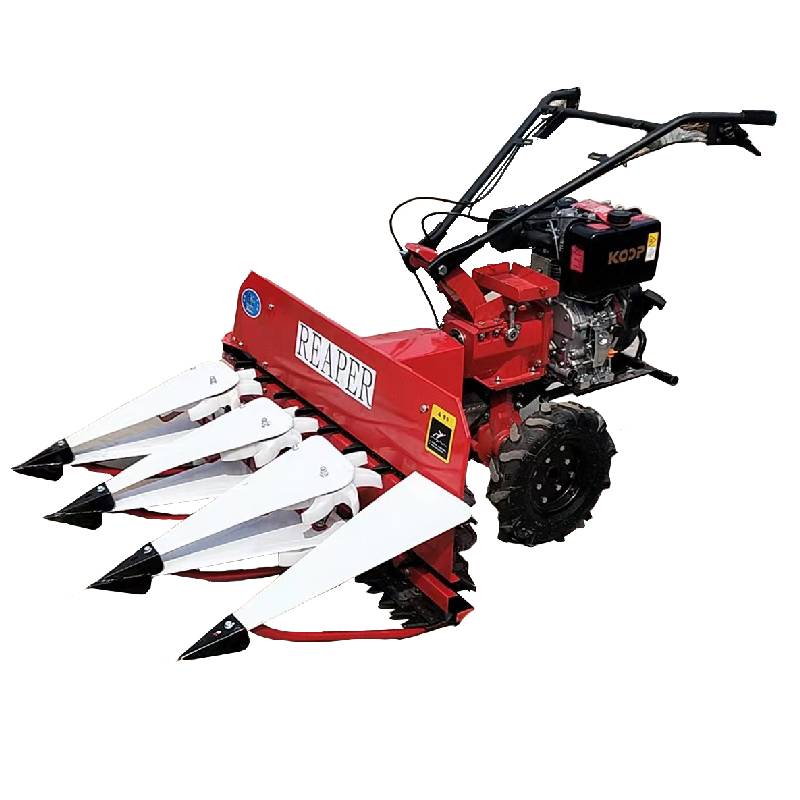Advanced Techniques for Efficient Hay Harvesting with Windrower Machines
The Windrower Machine Revolutionizing Hay and Forage Harvesting
In the world of agriculture, efficiency and effectiveness are paramount, especially when it comes to harvesting hay and forage. One of the most significant advancements in this field is the windrower machine. This specialized piece of equipment has transformed the way farmers and agricultural workers manage their crops, providing a reliable solution for cutting, conditioning, and windrowing hay and forage plants. In this article, we will explore the functionality, benefits, and impact of windrower machines on modern agriculture.
Understanding the Windrower Machine
A windrower, also known as a swather, is a farming implement designed to cut and lay down crops in neat rows or windrows for drying before they are baled or harvested. The machine typically consists of a cutting reel that operates with cutting sickles to slice through the crops, a conditioning system to prepare the plants for faster drying, and conveyance systems to gather and arrange the cut material into windrows. Windrowers come in various configurations, including pull-behind models, self-propelled versions, and those designed for specific types of crops.
The Mechanism of Operation
The windrower operates through a combination of mechanical components that work in unison to provide an efficient harvesting process. The cutting mechanism, which uses rotating blades or sickles, ensures a clean cut at the desired height. Once the crop is cut, the conditioning rollers work to crush and flatten the stems, facilitating moisture removal. The windrows are then formed by the machine's conveyor or auger systems, ensuring that the vegetation is organized for optimal drying in the sun.
By using a windrower, farmers can significantly reduce the time taken to prepare their crops for baling. Traditional methods often involved hand labor or less efficient machines, which could lead to inconsistent drying rates and reduced forage quality. The windrower streamlines this entire process, allowing farmers to focus on other operations.
Benefits of Using Windrowers
1. Increased Efficiency The primary benefit of windrowers lies in their efficiency. With the ability to cover large fields quickly, they allow farmers to harvest crops in a timely manner, reducing the risk of weather-related losses.
windrower machine

2. Improved Forage Quality By conditioning the forage before drying, windrowers enhance the quality of the end product. The even drying achieved through windrowing helps maintain the nutritional value of the forage, which is critical for livestock feed.
3. Labor Savings With the automation and mechanization of the cutting and conditioning processes, farmers can reduce labor costs and reliance. This means that fewer workers are needed to complete the same amount of work, resulting in significant savings.
4. Versatility Windrowers can be used for a variety of crops, including grasses, legumes, and small grains. This versatility makes them an essential tool for mixed-crop farmers who need to manage different types of forage.
5. Reduced Soil Compaction Unlike heavy harvesting equipment, windrowers are generally lighter and designed to minimize soil disturbance. This is particularly advantageous for maintaining soil health and preventing compaction, which can affect future crop yields.
The Future of Windrower Technology
As technology advances, the capabilities of windrowers are set to improve even further. Innovations such as GPS-guidance systems, precision agriculture technologies, and more efficient conditioning methods are being integrated into new models. These enhancements not only increase efficiency but also help reduce the environmental impact of farming operations.
Additionally, the growing emphasis on sustainable farming practices is driving the development of more eco-friendly machines. Manufacturers are exploring alternative energy sources and improved designs to minimize fuel consumption and emissions, aligning the windrower’s operation with modern agricultural practices aimed at sustainability.
Conclusion
The windrower machine is a vital component in the modern agricultural toolkit, enabling farmers to harvest hay and forage with unmatched efficiency and quality. As the industry continues to evolve, the windrower's role will likely expand, offering even more advanced solutions for managing crops sustainably. In a world where food security and resource management are increasingly critical, the windrower stands out as a remarkable example of innovation, contributing significantly to the success of agricultural practices today and in the future.
Latest news
-
When to Upgrade Your Old Forage HarvesterNewsJun.05,2025
-
One Forage Harvester for All Your NeedsNewsJun.05,2025
-
Mastering the Grass Reaper MachineNewsJun.05,2025
-
How Small Farms Make Full Use of Wheat ReaperNewsJun.05,2025
-
Harvesting Wheat the Easy Way: Use a Mini Tractor ReaperNewsJun.05,2025
-
Growing Demand for the Mini Tractor Reaper in AsiaNewsJun.05,2025







